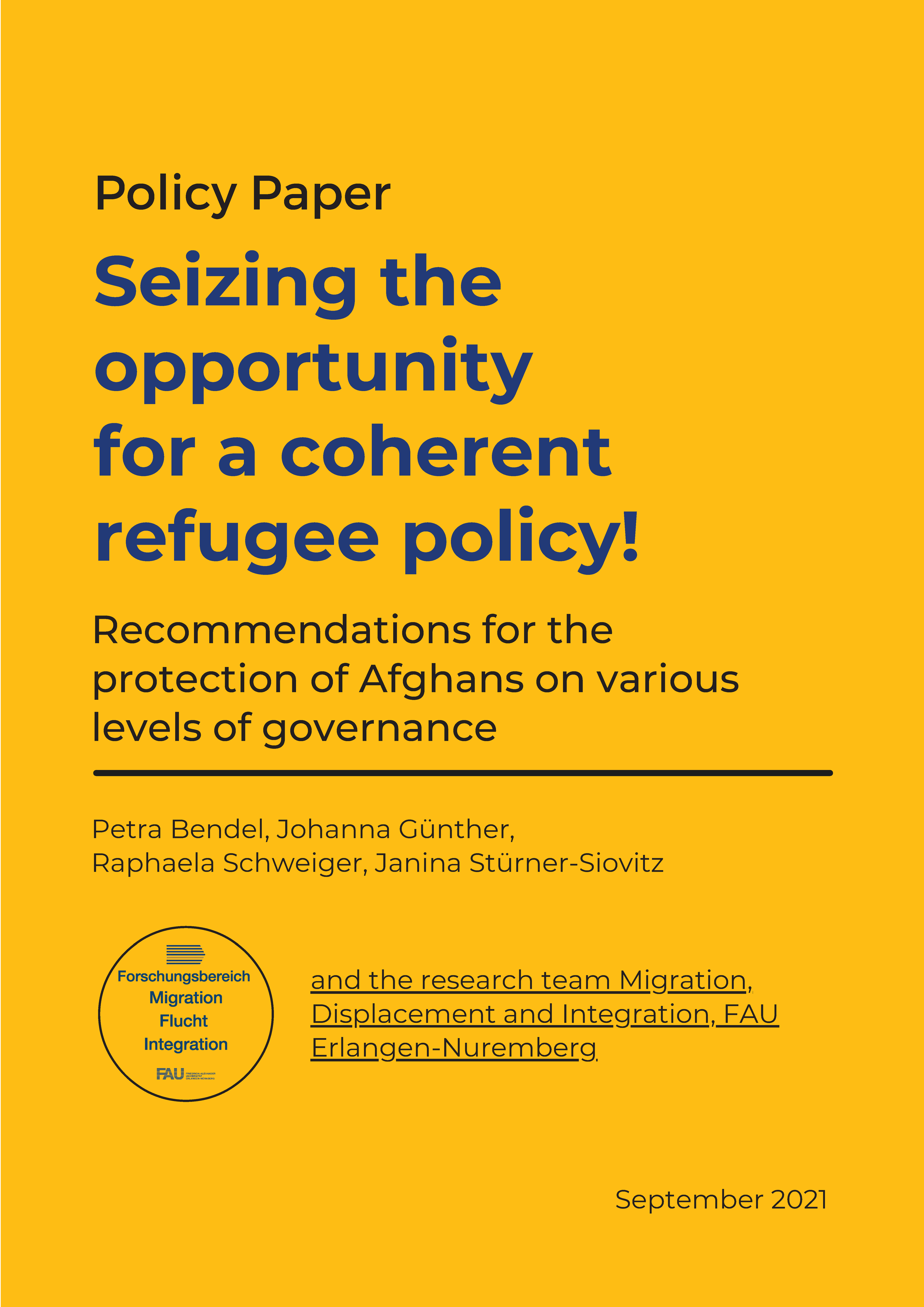Policy Paper Seizing the opportunity for a coherent refugee policy! Recommendations for the protection of Afghans on various levels of governance
Introduction

Over the past few weeks, the world watched in horror as the Taliban rapidly took over Afghanistan. Greatly underestimated by many, the capture of Kabul caused great consternation on the part of the international community – even more so: complete helplessness. [1]
It quickly became apparent that even bringing Europeans and Americans out of the country evolved into a mammoth task. The chaotic evacuation of Afghan nationals who had for years provided essential support to various armies and especially to German ministries and civil society organisations, ultimately became emblematic of the West’s failure in Afghanistan.
On August 27, the so-called “Luftbrücke” (German for “airlift”) of the German Bundeswehr came to an end. During their evacuation mission, the Bundeswehr flew 5,347 people from 45 countries out of Afghanistan, of which 4,400 were Afghan nationals. There are still more than 10,000 open requests for evacuation out of the country registered with the Foreign Office.
The coming days, weeks and months will bring a multitude of questions that international, European and German decision-makers will be expected to answer: What course will the international community and the European Union take? Did the Global Compact on Refugees manage to breathe new life into the by now 70-years-old Geneva Convention on Refugees? Or is the international community failing to guarantee the rights enshrined in international law to which Afghans seeking protection are entitled?
Is the EU unilaterally relying on refugees being taken in by countries in the region and, at worst, becoming the political pawns of authoritarian rulers? Is it relying on the fact that the routes taken by refugees to reach Europe are becoming increasingly more dangerous and thus less attractive? Or will the EU Member States finally succeed in establishing effective, resource-based humanitarian cooperation between EU Member States and host countries on the basis of group-specific criteria (quotas)? Will European decision-makers take the events in Afghanistan and the situation of the Afghan people as impetus to establish regular, safe and well-organised pathways to Europe – a way in which refugees can become part of their host societies and contribute to social and economic development?
In recent weeks, both on the European as well as on the German national level, policy makers called to prevent a repetition of the events of 2015 and 2016: overburdened national asylum systems and European municipalities unable to cope with the reception of refugees. In fact, given the situation in Afghanistan, the coming days, weeks, months and years will challenge the international community, the European Union and Germany in avoiding another political crisis in the governance of forced migration and its root causes.
However, it must be stressed that the situation in Afghanistan and that of Afghans now fleeing the country is completely different from the situation that led to the large number of arrivals of refugees to Europe in 2015 and 2016. To name just a few points: For one thing, Syrians were able to leave their country at that time. For Afghans on the other hand, the borders of their own country are, for the most part, closed. Also, the routes to Europe remained open to refugees fleeing Syria in 2015 and 2016 for a long time. Today, border reinforcements have already been made and more are planned. According to estimates of UNHCR, up to 500,000 more Afghan refugees could be expected in the coming months. The vast majority of the nearly 2.5 million currently registered Afghan refugees are in Pakistan and Iran (2.2 million). Under these circumstances, it is unlikely that the number of refugees arriving in Europe will be as high as in 2015/16.
Nevertheless, the way in which Afghan refugees will be treated and the responsibility shown towards them will depend greatly on the lessons that actors at the international level, the European Union and its Member States draw from the arrival of refugees in this recent episode in history. Europe has been battling itself for years trying to arrive at a common European asylum policy and system.
The Taliban’s accession to power in Afghanistan could be taken by European pioneer states, with Germany being one of them, as an urgent call to make a new push towards a common asylum and refugee policy.
In the following, we present policy recommendations for action in 21 key messages for decision-makers at different governance levels: (1) the international level, (2) the EU level, (3) the level of the German federal government and (4) the levels of the German Länder and municipalities. In each case, we highlight both short- and medium-term prospects, whereby there are also opportunities for overlap in the interest of coherent approaches. In the face of general concern, helplessness and incoherent policy approaches, the aim of this policy paper is to identify initial solutions and to make proposals for addressing the Afghan refugee situation at various levels of governance.
